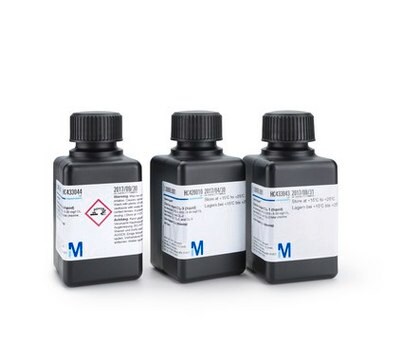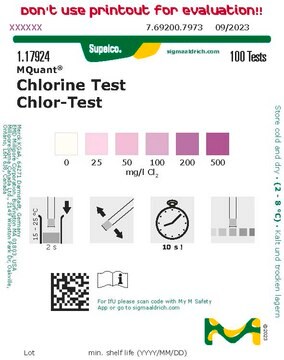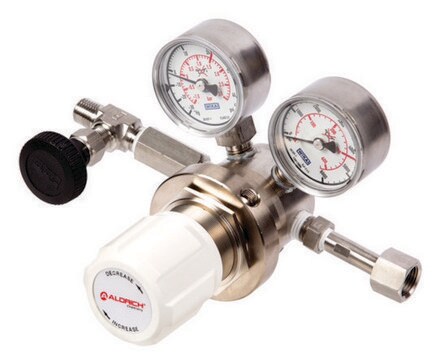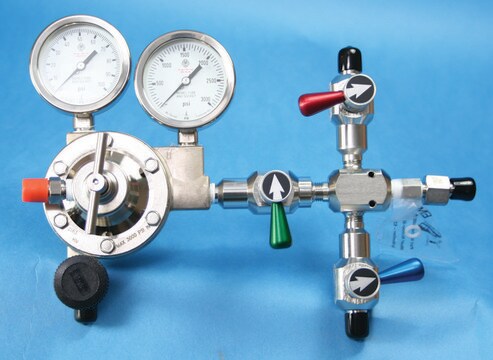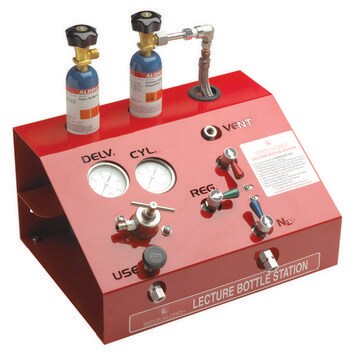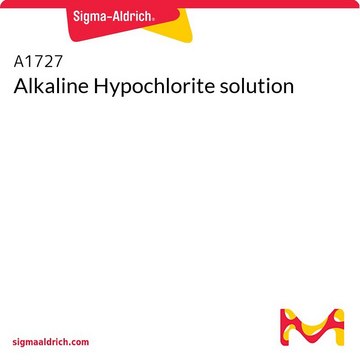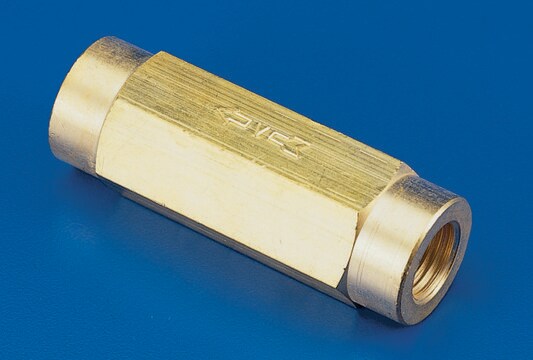22752
Chlorine
puriss., ≥99.8%
Sinónimos:
Chlorine gas
About This Item
Productos recomendados
densidad de vapor
2.48 (vs air)
presión de vapor
4800 mmHg ( 20 °C)
grado
puriss.
Ensayo
≥99.8%
resistividad
1E9 μΩ-cm, 20°C
residuo de evap.
≤40 ppm
bp
−34 °C (lit.)
mp
−101 °C (lit.)
cadena SMILES
ClCl
InChI
1S/Cl2/c1-2
Clave InChI
KZBUYRJDOAKODT-UHFFFAOYSA-N
¿Está buscando productos similares? Visita Guía de comparación de productos
Envase
Nota de análisis
Cláusula de descargo de responsabilidad
Palabra de señalización
Danger
Frases de peligro
Clasificaciones de peligro
Acute Tox. 2 Inhalation - Aquatic Acute 1 - Eye Irrit. 2 - Ox. Gas 1 - Press. Gas Compr. Gas - Skin Irrit. 2 - STOT SE 3
Órganos de actuación
Respiratory system
Código de clase de almacenamiento
2A - Gases
Clase de riesgo para el agua (WGK)
WGK 2
Punto de inflamabilidad (°F)
Not applicable
Punto de inflamabilidad (°C)
Not applicable
Equipo de protección personal
Eyeshields, Faceshields, Gloves
Elija entre una de las versiones más recientes:
¿Ya tiene este producto?
Encuentre la documentación para los productos que ha comprado recientemente en la Biblioteca de documentos.
Nuestro equipo de científicos tiene experiencia en todas las áreas de investigación: Ciencias de la vida, Ciencia de los materiales, Síntesis química, Cromatografía, Analítica y muchas otras.
Póngase en contacto con el Servicio técnico
